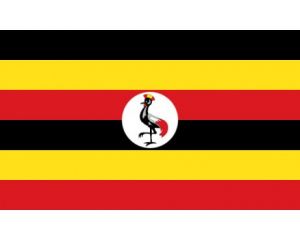Difference between revisions of "Language/Ganda/Grammar/How-to-Use-Be"
m (Quick edit) |
m (Quick edit) |
||
| Line 70: | Line 70: | ||
|description=In this lesson, we will learn how to use the verb "be" in Ganda. We will look at the different forms of the verb and how to use them in sentences. | |description=In this lesson, we will learn how to use the verb "be" in Ganda. We will look at the different forms of the verb and how to use them in sentences. | ||
}} | }} | ||
==Related Lessons== | |||
* [[Language/Ganda/Grammar/Plurals|Plurals]] | |||
* [[Language/Ganda/Grammar/Pronouns|Pronouns]] | |||
* [[Language/Ganda/Grammar/Negation|Negation]] | |||
* [[Language/Ganda/Grammar/Questions|Questions]] | |||
* [[Language/Ganda/Grammar/Conditional-Mood|Conditional Mood]] | |||
* [[Language/Ganda/Grammar/Adjectives|Adjectives]] | |||
{{Ganda-Page-Bottom}} | {{Ganda-Page-Bottom}} | ||
Revision as of 12:11, 1 March 2023
Hi Ganda learners! 😊
In this lesson, we will learn how to use the verb "be" in Ganda. We will look at the different forms of the verb and how to use them in sentences.
Introduction
The verb "be" is one of the most important verbs in any language. It is used to express existence, identity, location, and other states of being. In Ganda, the verb "be" is conjugated differently depending on the subject of the sentence. Let's take a look at the different forms of the verb "be" in Ganda.
Forms of the Verb "Be"
The verb "be" has three forms in Ganda:
- Ndagala (I am)
- Ndagala (You are)
- Ndagala (He/She/It is)
The verb "be" is conjugated differently depending on the subject of the sentence. For example, if the subject is "I", then the verb "be" is conjugated as "ndagala". If the subject is "you", then the verb "be" is conjugated as "ndagala". If the subject is "he/she/it", then the verb "be" is conjugated as "ndagala".
Examples
| Ganda | Pronunciation | English Translation |
|---|---|---|
| Ndagala | n-dah-gah-lah | I am |
| Ndagala | n-dah-gah-lah | You are |
| Ndagala | n-dah-gah-lah | He/She/It is |
Let's look at some examples of how to use the verb "be" in Ganda sentences.
- Person 1: Ndagala omuwendo. (I am a traveler.)
- Person 2: Ndagala omukazi. (You are a woman.)
- Person 3: Ndagala omulimu. (He/She/It is a teacher.)
Usage
The verb "be" can be used in many different ways in Ganda. It can be used to express existence, identity, location, and other states of being.
Existence
The verb "be" can be used to express existence. For example, if you want to say that something exists, you can use the verb "be".
- Person 1: Ndagala omulimu. (There is a teacher.)
- Person 2: Ndagala omukazi. (There is a woman.)
- Person 3: Ndagala omuwendo. (There is a traveler.)
Identity
The verb "be" can also be used to express identity. For example, if you want to say that someone is something, you can use the verb "be".
- Person 1: Ndagala omulimu. (I am a teacher.)
- Person 2: Ndagala omukazi. (You are a woman.)
- Person 3: Ndagala omuwendo. (He/She/It is a traveler.)
Location
The verb "be" can also be used to express location. For example, if you want to say that someone is somewhere, you can use the verb "be".
- Person 1: Ndagala omulimu. (I am in the classroom.)
- Person 2: Ndagala omukazi. (You are in the park.)
- Person 3: Ndagala omuwendo. (He/She/It is in the city.)
Conclusion
In this lesson, we have learned how to use the verb "be" in Ganda. We have looked at the different forms of the verb and how to use them in sentences. We have also seen how the verb "be" can be used to express existence, identity, location, and other states of being.
To improve your Ganda Grammar, you can also use the Polyglot Club website. Find native speakers and ask them any questions!
➡ If you have any questions, please ask them in the comments section below.
➡ Feel free to edit this wiki page if you think it can be improved. 😎
